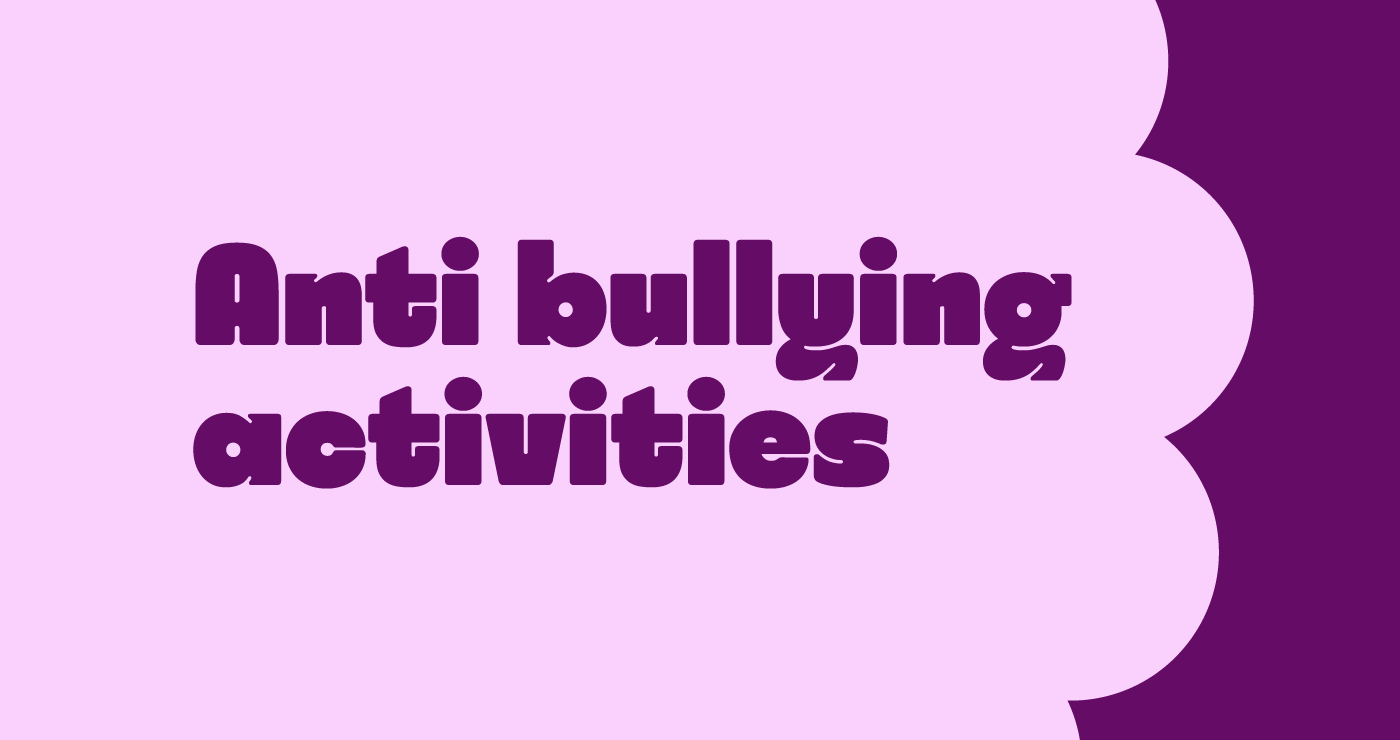
Shirin Bradfield
Why teach elementary school children about bullying?
The best way to combat bullying is to educate, engage, and inspire children about the topic of bullying and bullying prevention. Have a read of our other blog on Anti Bullying Lesson Plans. Children should be able to:
- identify what bullying behavior is and what it is not
- spot different types of bullying
- recognize the importance of reaching out to somebody who may be being bullied
- understand the best way to safely reach out to someone when they’re being bullied
What can we do to stop bullying?
Firstly it is good to make sure your students understand the differences between;
- Physical bullying — the use of physical harm and or pain through aggressive pushing, knocking them over, and breaking their possessions.
- Cyberbullying — bullying is not new, but the internet provides a new tool for bullies to reach their victims outside of school premises through social media. Victims of cyberbullying are often subject to anonymous name-calling messages, nasty comments, memes, and sharing photos of them without consent.
- Verbal bullying — when mean words are said to another student. This can be name-calling, threats, and rude words which are used again and again.
- Social bullying — repetitive attempts to make someone feel lonely and isolated by spreading rumors about them, trying to embarrass them, or using peer pressure to make them do silly or embarrassing things.
What do anti-bullying campaigns do?
Anti-bullying campaigns, such as bullying prevention month aim to teach students to understand the effects of bullying on people while they’re at school and once they leave the school gates. The social-emotional learning can help empower upstanders to stand up to bullying behavior and spread the anti-bullying message amongst their peers and younger students.
How can you promote an anti-bullying message in your classroom?
It is really important that the school community is a safe space for students to speak about their experiences. So much time is spent at school so students must feel safe there. Opening up communication with you and your students will help build a safe environment. Although bullying can happen outside of school it is really important that you raise bullying awareness and send a strong message that bullying behavior will not be tolerated in your classroom. Do intervene if you see instances of any bullying.
What are some examples of anti-bullying activities for students?
Here are 15 activity ideas for you to consider using in the classroom:
- Use the Kami templates to ask students to identify different types of bullying they can think of to start the discussion. Use the worksheets here.
- Deliver positive, proactive messages, so students feel empowered to tackle bullying. Start an interactive discussion about the role of a bystander in a bullying scenario.
- Put the students into small groups and ask them to identify how they might feel if someone bullied them. Ask them to discuss the impact of bullying on someone. Try to use distancing language in these scenarios to make sure students feel able to speak freely and without judgment.
- Create an anti-bullying pledge for your school. Ask for students’ ideas for a pledge that suits your community organically. You can include the motto in your lessons.
- For older students ask them to role-play some scenarios where they have seen bullying happen and how they could have supported the person being bullied.
- Ask the students to design some conflict resolution posters to display in the classroom to remind students and teachers alike how to manage difficult situations.
- Celebrate diversity amongst the students to create a positive environment for differences. Sometimes children are bullied for being different, if you educate children about all different cultures this will ensure they understand differences are to be celebrated not denigrated.
- Promote positive behavior and kindness through classroom activities. Design ‘Kind Hands’ posters that show the kind ways we use our hands. Reward kind behavior throughout the day to show the students the benefits of kindness and friendship.
- Use a creative writing assignment as a way to teach empathy. Perhaps ask your students to write a blog or diary entry from the perspective of someone who has been bullied. How did it make them feel? Who could they talk to? Did any friends support them through it?
- If your students are using social media discuss what are appropriate and inappropriate types of messages to send on social media platforms. Consider the long-term impact of images and words online.
- Promote thoughtfulness when using words by asking students to write adjectives (good and bad) on pieces of paper. Crumple up the paper and show the students that just like the paper you cannot take words back, they leave a mark just like the paper being crumpled does.
- Organize a creative writing project, such as writing a poem speaking out against bullying or a story or skit teaching bystanders how to help.
- Create anti-bullying posters. If students are learning from home, post them on a virtual bulletin board, or create a slideshow for all to see. Decorate your school walls with these positive messages to encourage bullying prevention.
- Promote self-acceptance through mantras to enable students to walk away from bullying behavior. Statements such as “I am a good and caring person and deserve to be treated with respect”, “there are people who love me and will be there for me when I need them” and “I deserve to be happy”.
- Create a handout about what it takes to be an upstander to stop bullying. Discuss with the students what the difficulties of being an upstander can be.
Moving forward with confidence
It can feel like a daunting task to combat bullying in the classroom, however, leading the lessons with kindness, compassion, and respect will provide a secure and safe space for students. If you provide a positive climate for learning, the students will understand that bullying will not be tolerated. Be mindful of the behavior you do see in the classroom, keep your eyes and ears open to ‘jokes’ and watch students’ body language to see who may or may not feel happy in that environment.
Resources to help you stop bullying in your classroom
You may also like

From ancient academies to AI-enabled classrooms

Improving AI literacy in American schools

